Determination of Material Strengths by Hydraulic Bulge Test
Abstract
:1. Introduction
2. Device and Experiment
3. Theoretical Derivation
3.1. Method for Yield Strength
3.2. Method for Ultimate Tensile Strength
4. Comparison with Conventional Tensile Testing Methods
5. Conclusions
Acknowledgments
Author Contributions
Conflicts of Interest
References
- Manahan, M.P. The Development of A Miniaturized Disk Bend Test for the Determination of Post-Irradiation Mechanical Behavior. Ph.D. Thesis, Massachusetts Institute of Technology, Cambridge, MA, USA, 1982. [Google Scholar]
- Manahan, M.P.; Argon, A.S.; Harling, O.K. The development of a miniaturized disk bend test for the development of post-irradiation mechanical properties. J. Nucl. Mater. 1981, 104, 1545–1550. [Google Scholar] [CrossRef]
- Standard Test Method for Small Punch Testing of Ultra-High Molecular Weight Polyethylene Used in Surgical Implants; ASTM F2183-02; ASTM International: West Conshohocken, PA, USA, 2008.
- Small Punch Test Methods of Metallic Materials for In-Service Pressure Equipment; GBT 29459-2012; Standards Press of China: Beijing, China, 2012.
- Small Punch Test Method for Metallic Materials; CWA 15627:2007; European Committee for Standardization: Brussels, Belgium, 2006.
- Ding, K.; Li, Y. Research status and prospects for small punch test techniques. Adv. Mech. 2009, 39, 299–315. [Google Scholar]
- Abendroth, M. FEM analysis of small punch tests. In Proceedings of the 3rd Annual International Conference SSTT, Graz, Austria, 23–25 September 2014.
- Fleury, E.; Ha, J.S. Small punch tests to estimate the mechanical properties of steels for steam power plant: I. Mechanical strength. Int. J. Press. Vessels Pip. 1998, 75, 699–706. [Google Scholar] [CrossRef]
- Egan, P.; Whelan, M.P.; Lakestani, F.; Connelly, M. Small punch test: An approach to solve the inverse problem by deformation shape and finite element optimization. Comput. Mater. Sci. 2007, 40, 33–39. [Google Scholar] [CrossRef]
- Wei, T.; Carr, D.G.; Budzakoska, E.; Payten, W.; Harrison, R.P.; Ripley, M.I. Assessment of the fracture toughness of 6061 Aluminum by the small punch test and finite element analysis. Mater. Sci. Forum 2006, 30, 39–44. [Google Scholar]
- Ma, G.; Iwasaki, S.; Miyamoto, Y.; Deto, H. Plastic limit analyses of circular plates with respect to unified yield criterion. Int. J. Mech. Sci. 1998, 40, 963–976. [Google Scholar]
- Jiang, C. The Plastic Limit Analysis of Circulate Plate. Ph.D. Thesis, Chongqing University, Chongqing, China, 2006. [Google Scholar]
- Campos, H.; Santos, A.D.; Martins, B.; Ito, K.; Mori, N.; Barlat, F. Hydraulic bulge test for stress-strain curve determination and damage calibration for ITO-GOYA model. In Proceedings of the World Congress on Computational Congress XI, Barcelona, Spain, 20–25 July 2014.
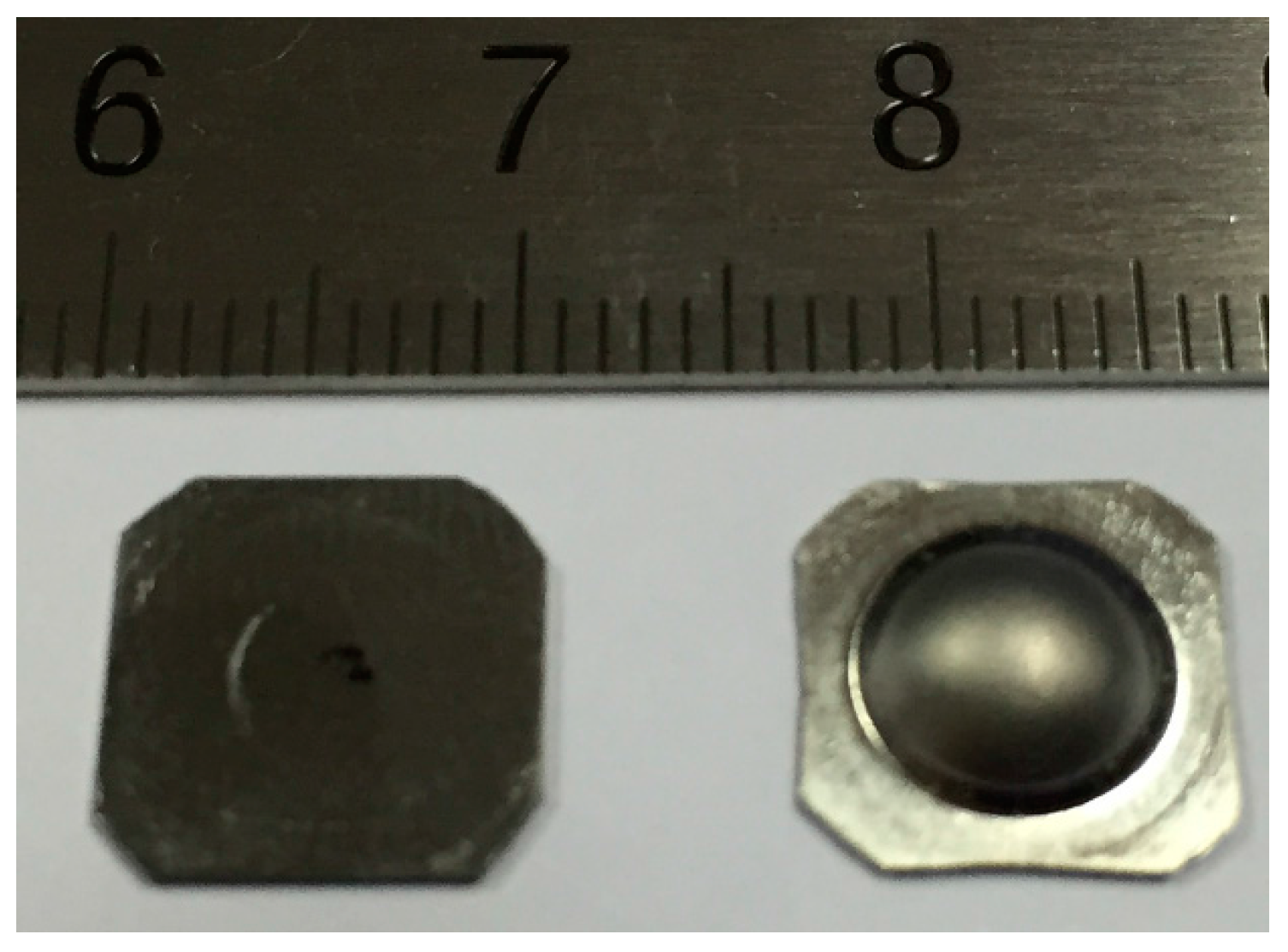
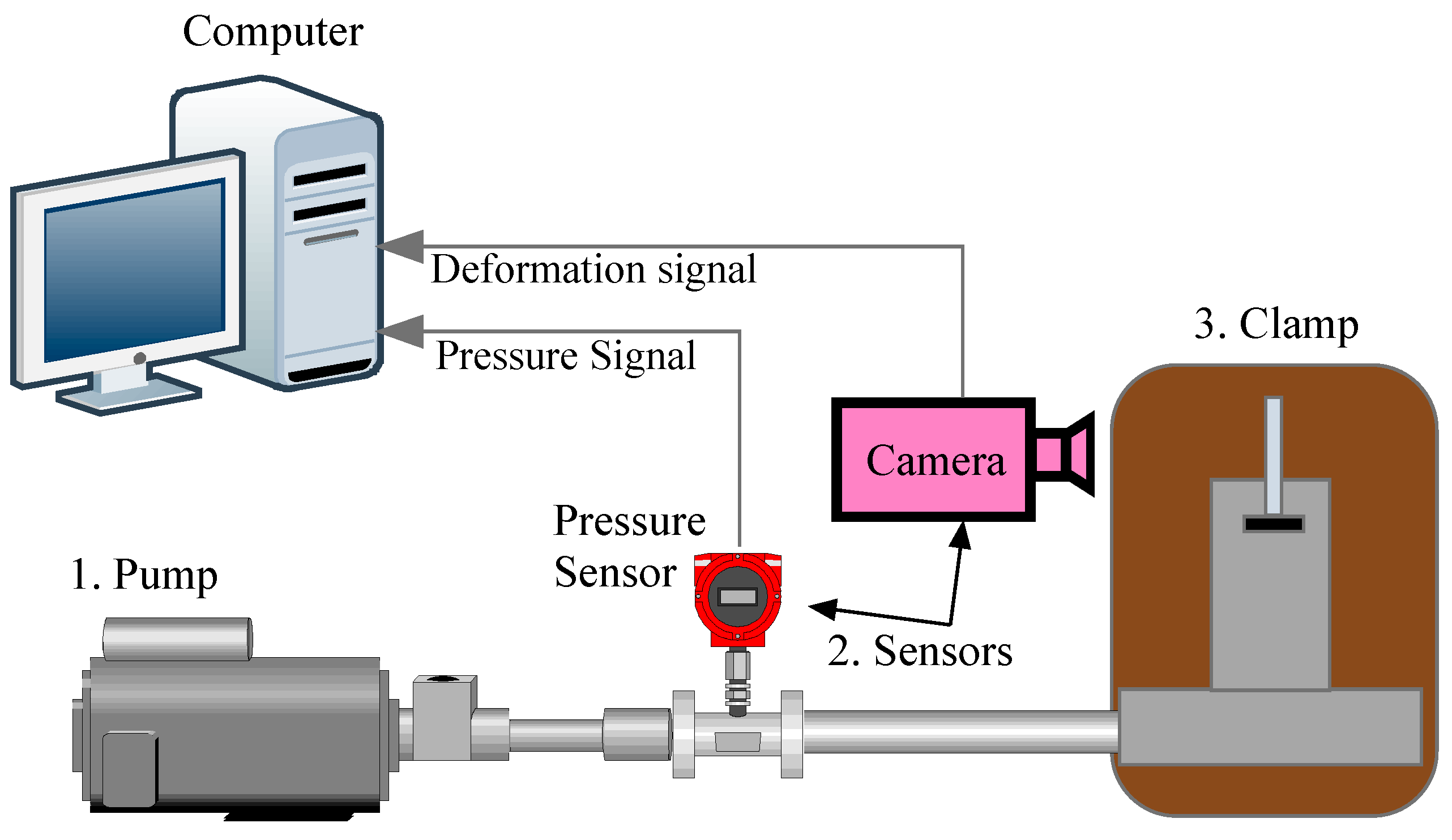
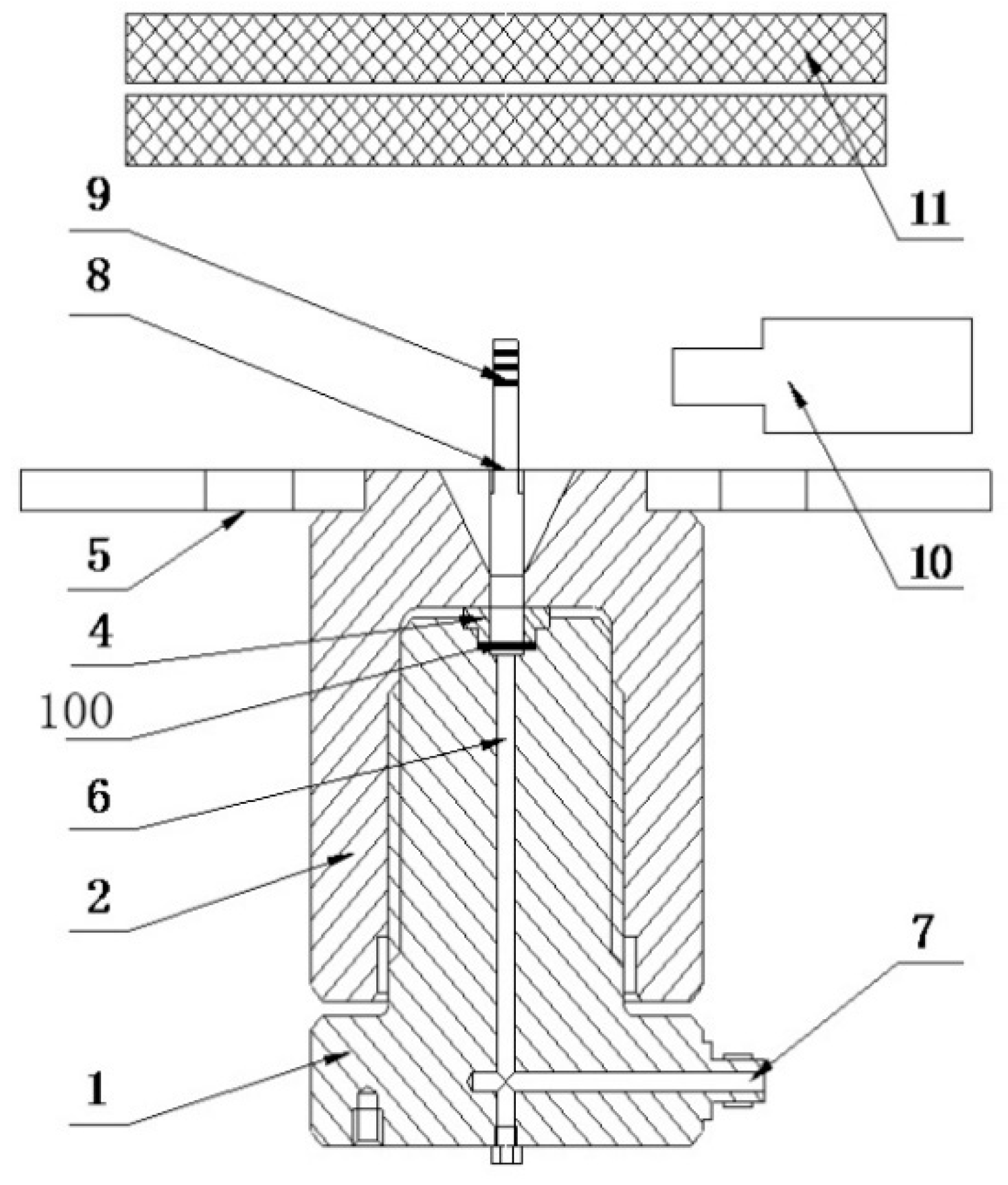
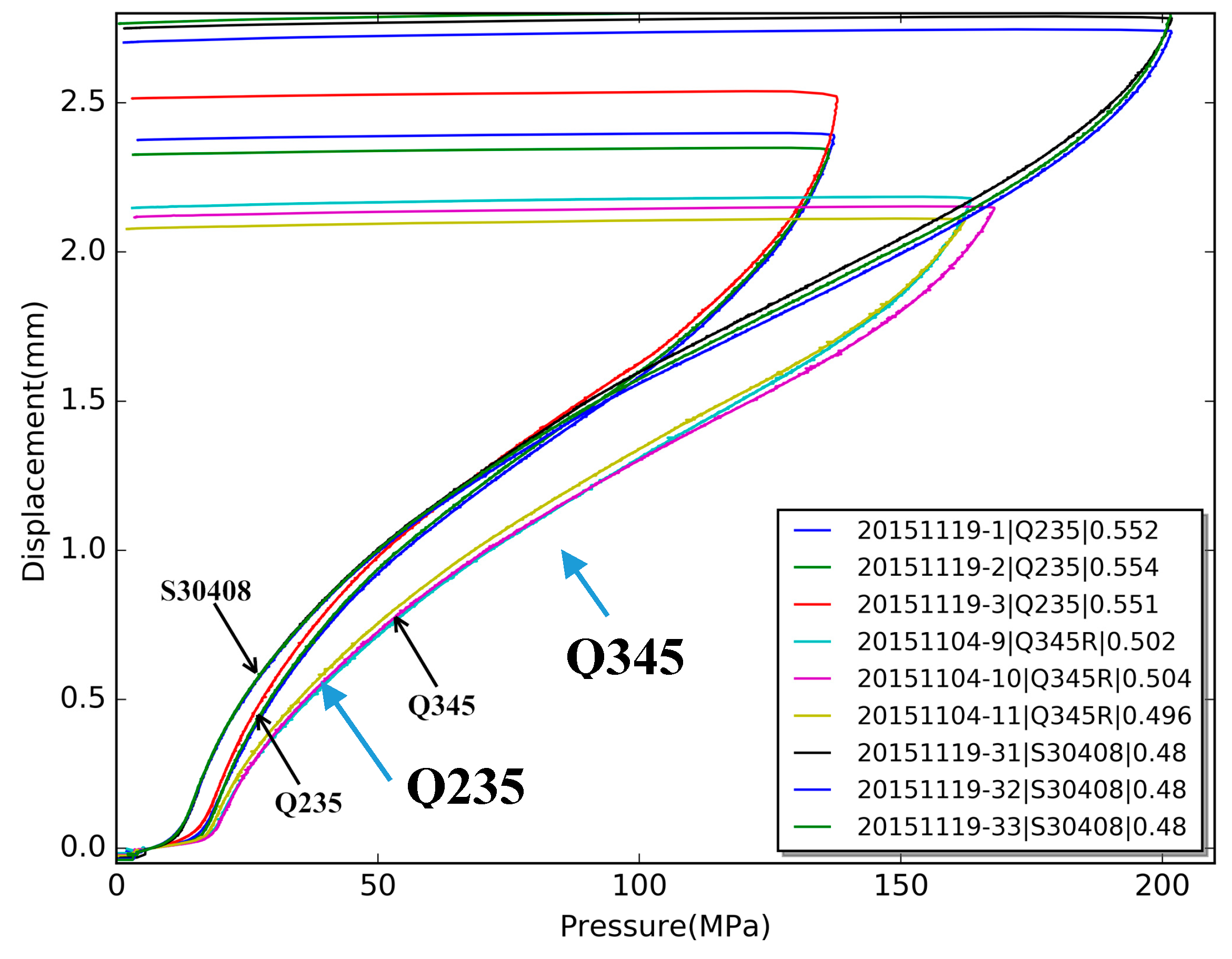
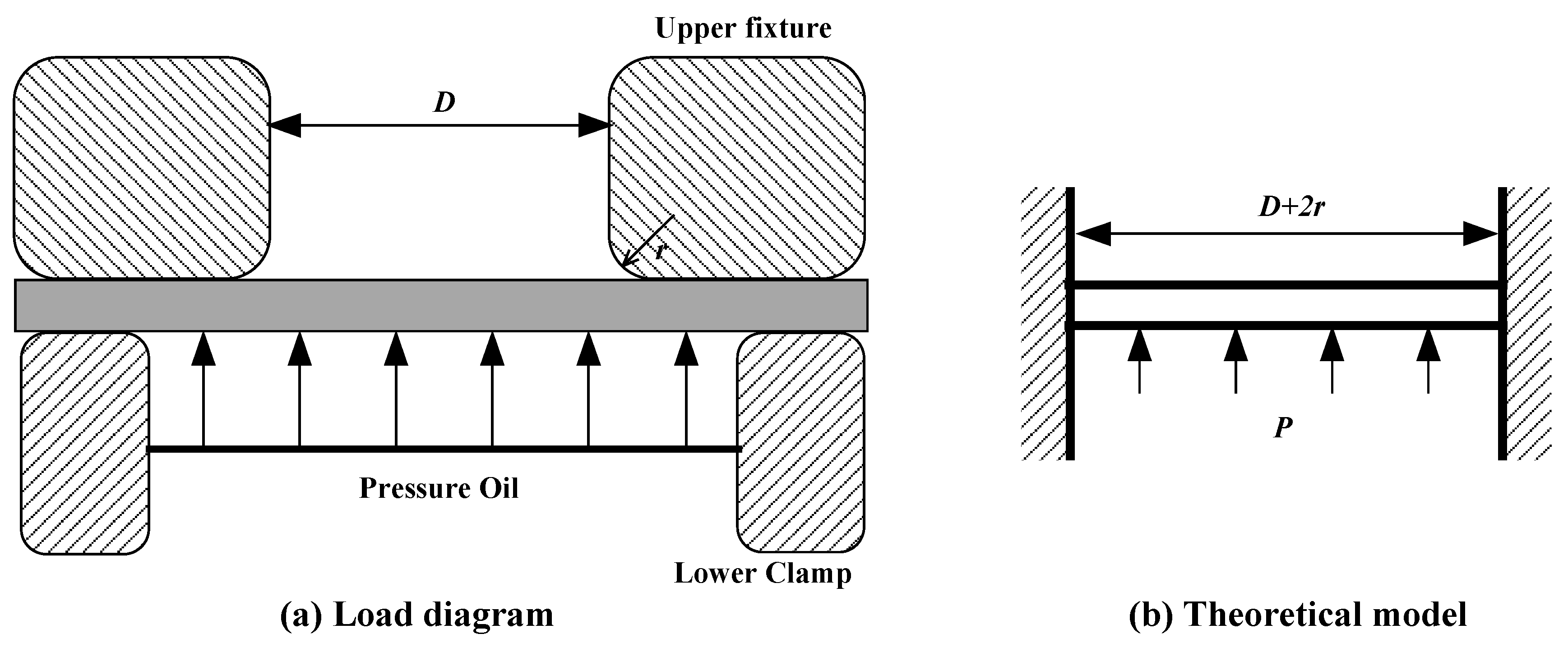
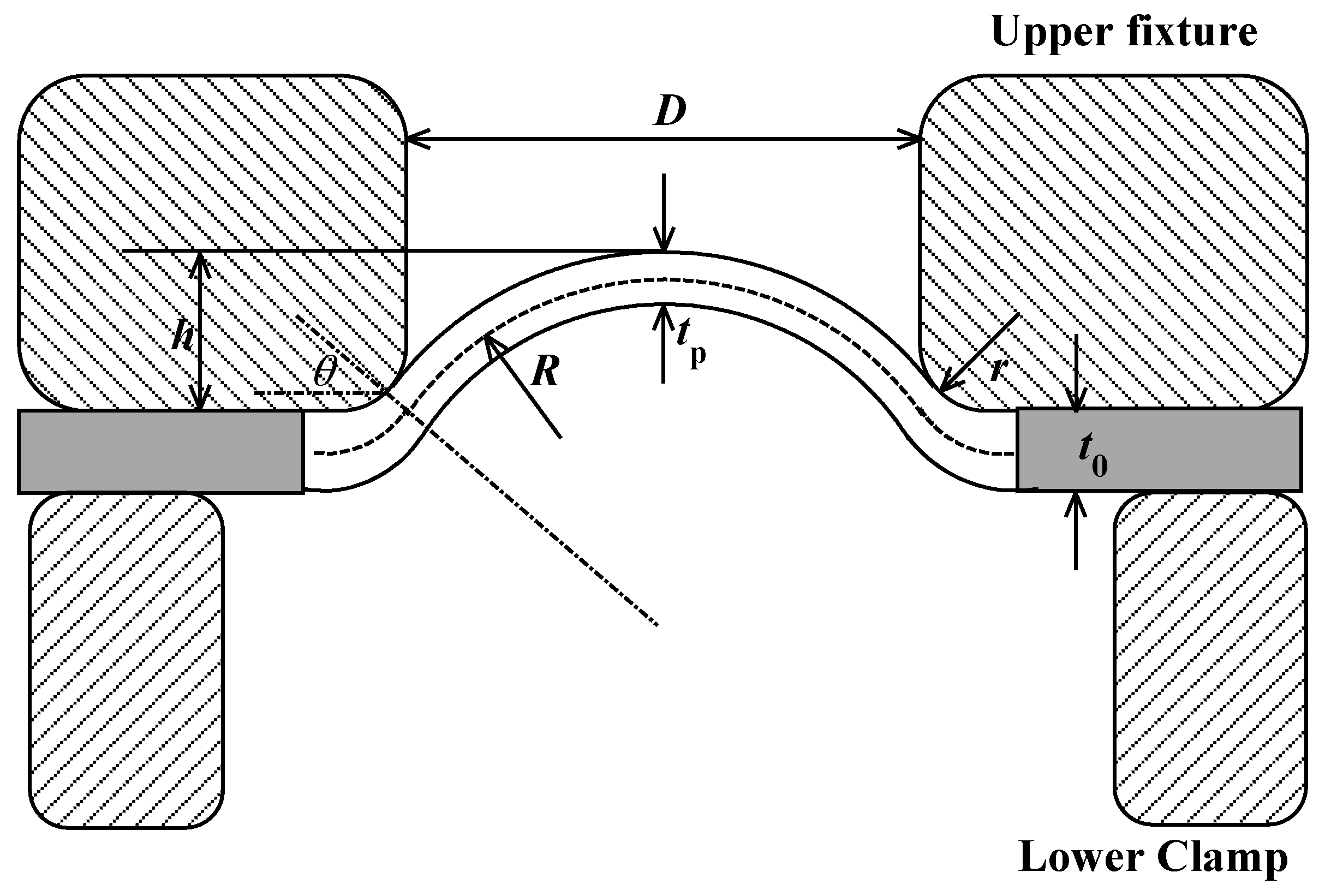
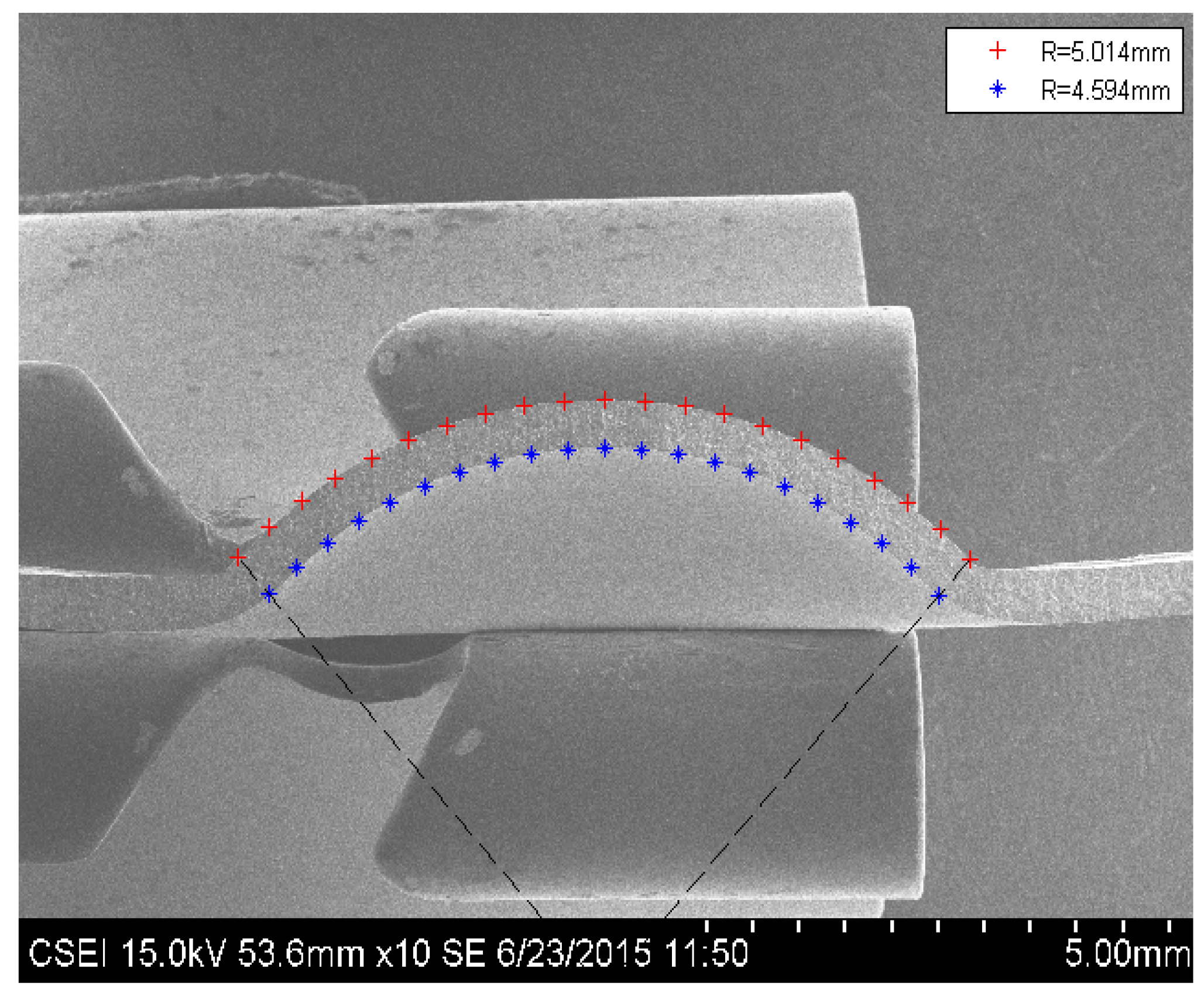




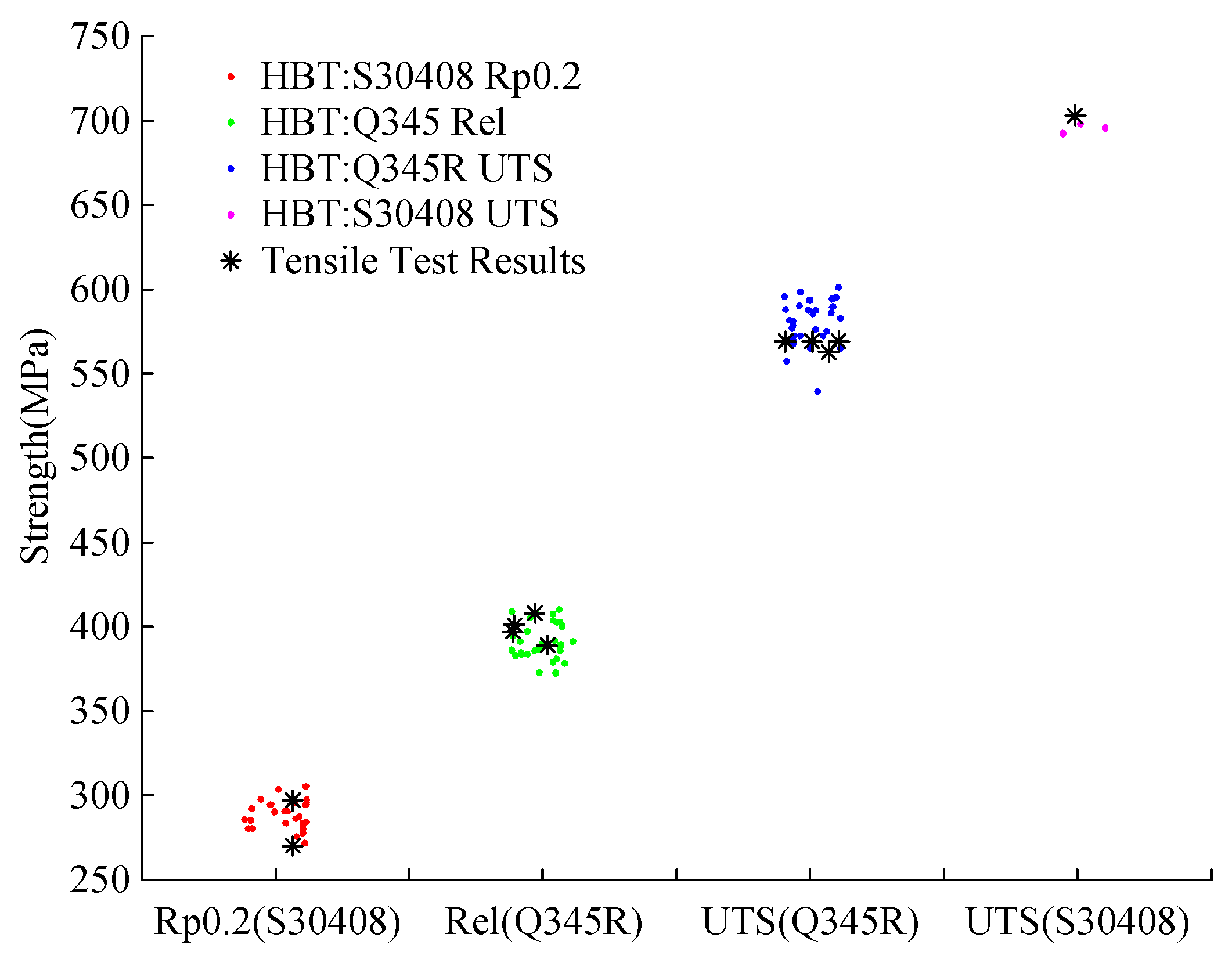

| Material | Units | Q345R | S30408 | |||
|---|---|---|---|---|---|---|
| Specimen No. | 1 | 2 | 3 | 4 | 1 | |
| Yield Strength (YS) | MPa | 408 | 389 | 401 | 397 | 297 |
| Ultimate Tensile Strength (UTS) | MPa | 569 | 563 | 569 | 569 | 703 |
| Specimen | Yield Strength | Ultimate Tensile Strength | ||||
|---|---|---|---|---|---|---|
| Material | Thickness (mm) | Plim (MPa) | YS (MPa) | Pc (MPa) | hc (mm) | UTS (MPa) |
| S30408 | 0.480 | 13.8 | 301 | 194 | 2.69 | 695 |
| Q345R | 0.506 | 19.3 | 391 | 157 | 1.99 | 589 |
| Q235B | 0.492 | 12.6 | 262 | 123 | 2.08 | 461 |
| 3Cr1Mo | 0.501 | 25.8 | 517 | 136 | 1.63 | 580 |
© 2016 by the authors. Licensee MDPI, Basel, Switzerland. This article is an open access article distributed under the terms and conditions of the Creative Commons Attribution (CC-BY) license ( http://creativecommons.org/licenses/by/4.0/).
Share and Cite
Wang, H.; Xu, T.; Shou, B. Determination of Material Strengths by Hydraulic Bulge Test. Materials 2017, 10, 23. https://doi.org/10.3390/ma10010023
Wang H, Xu T, Shou B. Determination of Material Strengths by Hydraulic Bulge Test. Materials. 2017; 10(1):23. https://doi.org/10.3390/ma10010023
Chicago/Turabian StyleWang, Hankui, Tong Xu, and Binan Shou. 2017. "Determination of Material Strengths by Hydraulic Bulge Test" Materials 10, no. 1: 23. https://doi.org/10.3390/ma10010023





